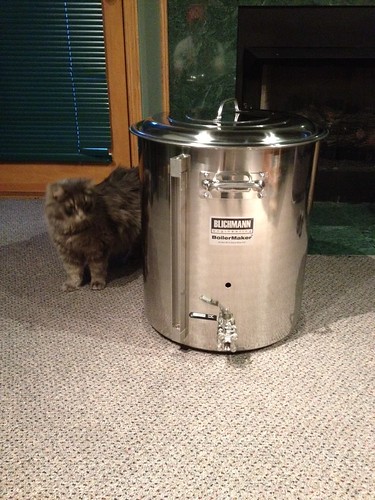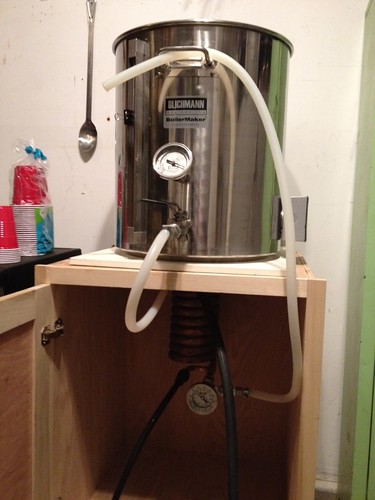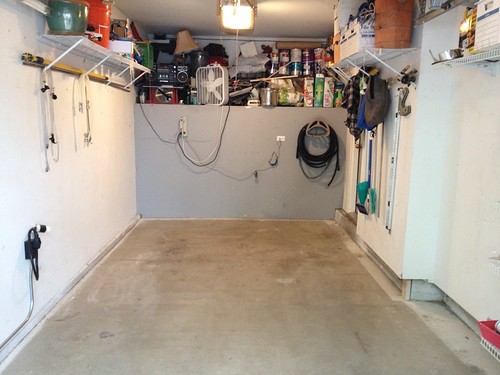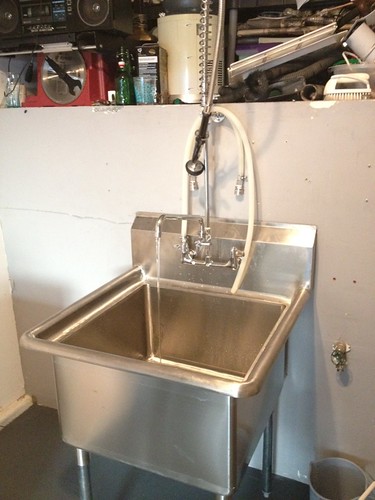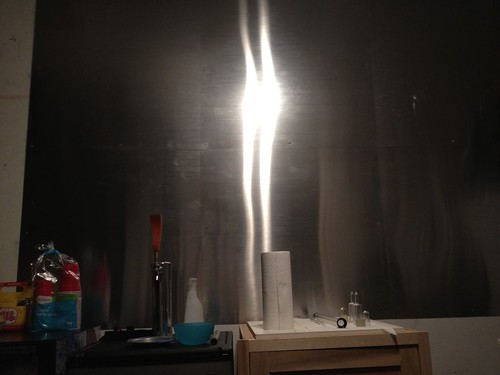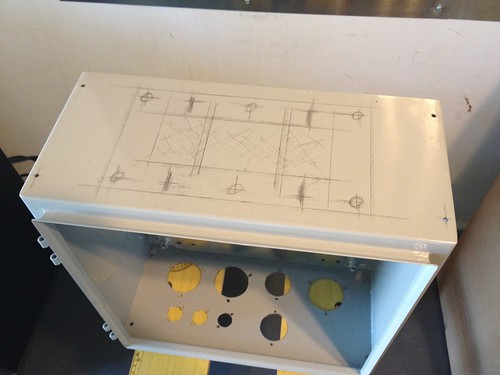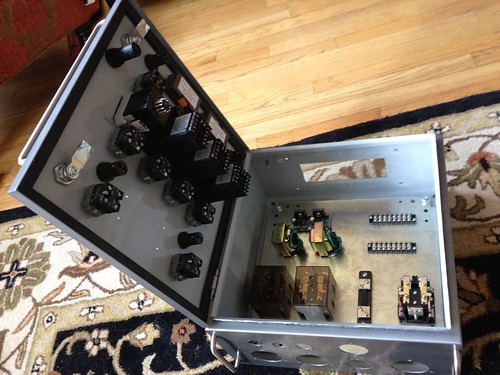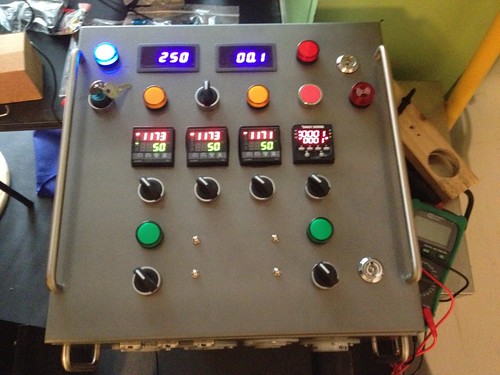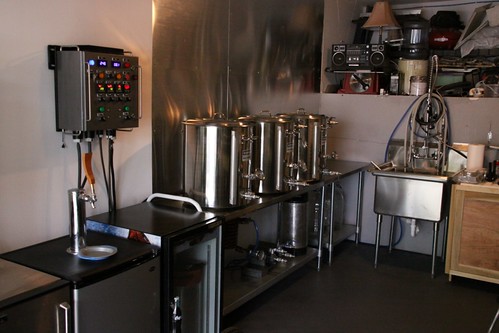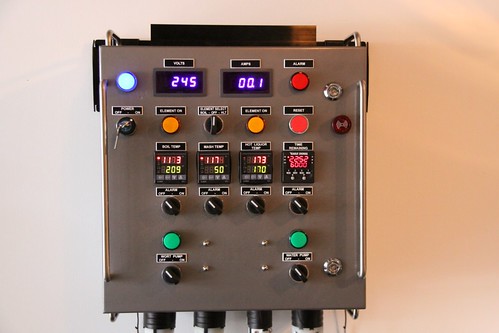After some discussion, we decided to do the exact same brew again. First off I was anxious to do another brew! The system was calling! The whole week I reflected on our brew from the last weekend, and realized we may have made a major mistake.
Though we were careful to sanitize everything that would come in contact with the beer, I realized we may not have sanitized the outside of the hose that comes out of the chiller into the fermentor. Doh!
In doing the same batch again, we felt we would have one of two results:
- If the first batch was good and no contamination, then this second batch would demonstrate how much better the rig was performing with us tightening things down.
- IF the first batch ended up being bad, then we have an IPA just a week behind it and it would help reduce the sting of such a mistake.
The brew day started at 10am, and I was running solo today as Sam had to go down to Indy. I started by filling the HLT, removing the chlorine, and bringing up the temp. While that was going on I started crushing the grain.
First problem of the day - I thought I had 28lbs of the 2-row, turns out I had 27. Off to the store I went!
Once I had all the grains, I completed the crush, then started moving water into the MLT. The connections were much better today, little to no leaking. I felt this would help with better heat exchange as well. The performance was better than last time, however it does seem to take ages to get that last 1-2 degrees in the MLT.
Second problem of the day - The PID on the HLT was overshooting the temp setting. There is a way to calibrate them, so next time I brew I am going to do so.
I then put in the grains, stirred, added brewers salts, took Ph readings, and brought it down to 5.2-5.3. Set the timer for 90 minutes and there we go!
Third problem of the day - The Wort pump started making a clicking sound. I could not hunt it down, and it persisted the entire brew. However its intensity lessened over time. The flow seemed ok on everything so I didn't sweat it much, more annoying right now.
After the mash I started the mash-out in bringing the temp of the MLT up. At this same time I started to adjust the Ph of the HLT for the sparge process.
Fourth problem of the day - I ended up putting in too much lactic acid! My Ph went down to 4.2! My target was 5.6-5.8, so I missed that by a mile. Eventually I removed a lot of the water, and added new tap water and removed the chlorine. This presented a problem though with the heat exchange in the HERMS, so it slowed my mash-out quote a bit. I was able to get proper Ph though before sparge.
I then started to sparge, and things were looking good! Once I had the level I needed in the boil kettle we were off and running. This recipe has a lot of adding hops, so I spent most of the boil standing near the kettle tossing in hops.
After the boil was complete I hooked up everything to chill the wort.
Fifth problem of the day - I connected everything and opened all hoses. Then I started the cold water flow to chill, however I was getting leaks in several places. One was due to simply not being tight enough, another the steel band wasn't tight enough around the barb, and the last was due to the rubber washer being in the wrong place. While fixing all of those I didn't realize that my boil kettle was draining into my fermentor! This now meant I had about 2 gallons not very chilled.
Sixth problem of the day - Once I got the chiller dialed in for good temp, the flow started to slow significantly towards the end. Looking closely at the hose coming from the boil kettle I could see lots of air getting into the line. This had me stumped as everything looked submerged still. After later posting this experience on a forum, it was pointed out to me that the Hop Stopper I used will suck in air towards the end once any part of it goes above liquid line. Because hops now line the outside of the Stopper, it slows flow down. The solution is to slow the pumps to a crawl to keep siphon pressure in the line.
I ended up getting frustrated and left about one gallon behind that I didn't mean to, so I'm only fermenting about 9 gallons. Our OG on this batch was 1.069.
Their ended up being one ingredient change from the first go around, unfortunately my local brew supply shop ran out of the Pacific Ale yeast by White Lab, so I substituted the Wyeast American Ale II yeast.
Since I had filled a carboy with about 2 gallons of hot wort, I had to let that cool before I could pitch the yeast. I ended up putting that in the sink and putting the stopper in the bottom to let it set in a cool bath while the other carboy was filling up. Afterwards I then let it sit in the colder basement for about 2 more hours before pitching the yeast before bed.
Once I had everything transferred, it was clean-up time! That does take a long time when it is just one person. The HLT of course is super easy to clean, as basically there is nothing to clean since it only holds water! The MLT has almost 30lbs of grain in it, so there is a lot to clean there. Fortunately it is the only kettle without a heating element so it is easy to bring into the sink for cleanup. The boil kettle is a bit trickier to clean as it is the furthest from the sink, and there are a ton of spent hops in it that will clog the sink. I've been using a strainer in the sink to separate the hops, it helps but it is still a slow process.
After the kettles are clean, the pumps and the chiller also need cleaning as well as the hoses. I then put hot water back in the HLT, and run it through the whole system, then at the end of the line I drain it into the sink.
Whew, what a long day of brewing, but so much fun! In the next few brews we will start adding parts to the brew day as well such as transferring from primaries to secondaries, as well as kegging.






